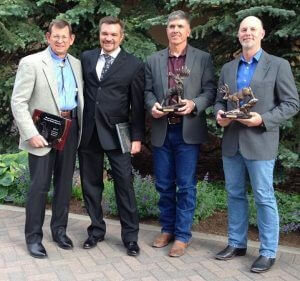Source: Arizona State Parks and Trails Press Release – September 26, 2017
Arizona State Parks and Trails today won the Gold Medal for best managed state park system in the nation from the National Recreation and Park Association (NRPA). The award was announced this morning during the national NRPA conference in New Orleans, Louisiana.
“This is a tremendous achievement that benefits everyone in our state – from residents to tourists,” said Governor Doug Ducey. “Winning the Gold Medal is a testament to the hard work, collaboration and innovation that Arizona State Parks and Trails demonstrated to get us to this point.”
 Arizona State Parks and Trails was selected as a Final Four candidate in May, along with Tennessee State Parks; Washington State Parks and Recreation Commission; and Wyoming State Parks, Historic Sites, and Trails. Over the last two years, Arizona State Parks and Trails has established a self-sufficient funding structure, achieved record visitation and revenue and implemented a plan to reinvest in the system and create new parks.
Arizona State Parks and Trails was selected as a Final Four candidate in May, along with Tennessee State Parks; Washington State Parks and Recreation Commission; and Wyoming State Parks, Historic Sites, and Trails. Over the last two years, Arizona State Parks and Trails has established a self-sufficient funding structure, achieved record visitation and revenue and implemented a plan to reinvest in the system and create new parks.
“This Gold Medal win is not just about the staff of Arizona State Parks and Trails,” said Sue Black, Executive Director of Arizona State Parks and Trails. “This is about everyone in Arizona who contributes to our success or gets to enjoy our beautiful parks. It’s a huge honor to be considered the best-managed state park agency in the country, and we hope everyone will get out and see these amazing parks first-hand.”
To celebrate making it to the Final Four and hear the Gold Medal winner announced, agency partners, stakeholders and constituents gathered at the Arizona State Parks and Trails Outdoor Recreation Information Center on Tuesday morning as the event was live-streamed on Facebook from New Orleans. Executive Director Black accepted the award.
The Gold Medal Award honors state park systems throughout the United States that demonstrate excellence in long-range planning, resource management and innovative approaches to delivering superb park and recreation services with fiscally sound business practices.
For information about all 35 Arizona State Parks and Natural Areas, the Trails and Off-Highway Vehicle Programs and State Historic Preservation Office call 1-877-MY-PARKS or visit AZStateParks.com.
PRESS CONTACT: Michelle Thompson at (602) 542-1996 or (480) 589-8877 – Email: pio@azstateparks.gov




You must be logged in to post a comment.